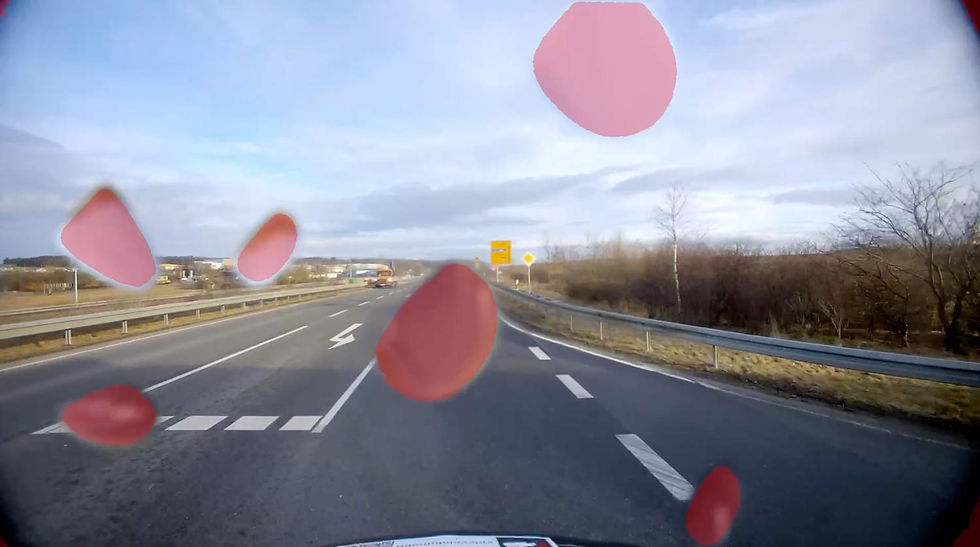

visionairy®
Follow Me Guidance
Enables drones to autonomously and intelligently track and follow moving targets in real time, ensuring smooth pursuit even in complex, changing environments.
Why Follow Me Guidance?
Follow Me Guidance gives drones the power to autonomously track people, vehicles, or objects using real-time vision—no GPS or manual control required. It outperforms traditional tracking by adapting instantly to dynamic environments, ensuring smooth, reliable pursuit in even the most challenging conditions.
With onboard vision and intelligent path adjustment, the system handles terrain changes and obstacles with ease. The result: smarter, safer, and more hands-free tracking for demanding applications like filming, inspection, or rescue.
Autonomous visual tracking
Real-time adaptation
Reliable pursuit in complex, dynamic environments
See how it works

These performance metrics are for demonstrative purposes only, based on configurations with proven results. Actual performance may vary by setup. Our algorithms are optimized for use with any chip, platform, or sensor. Contact us for details.
Update Rate
5-10 Hz
Initialization Time
<10 seconds
Maximum Target Speed
30km/h
Operating Range
Line-of-sight or sensor-limited
Latency
<100 ms
Supported companion hardware
Nvidia Jetson, ModalAI Voxl2 / Mini, Qualcomm RB5, IMX7, IMX8, Raspberry PI
Supported flight controllers
PX4, APX4, Ardupilot
Basis-SW/OS
Linux, Docker required
Interfaces
ROS2 or Mavlink
Input - Sensors
• Any type of camera (sensor agnostic)
• Any type of IMU or GPS
Input - Data
• Camera's video frames
• Aerial vehicle’s odometry
• Aerial vehicle’s current flight height
• Intrinsic & extrinsic sensor calibration
Output - Data
• Navigation of the Aerial vehicle
• Position commands for the Autopilot
• Velocity and orientation commands for the Autopilot
Minimum
Recommended
RAM
2 GB
4 GB
Storage
20 GB
50 GB
Camera
640 x 480 px, 10 FPS
1920 x 1080 px, 30 FPS
IMU
100 Hz or GPS
300 Hz or GPS
The information provided reflects recommended hardware specifications based on insights gained from successful customer projects and integrations. These recommendations are not limitations, and actual requirements may vary depending on the specific configuration.
Our algorithms are compatible with any chip, platform, sensor, and individual configuration. Please contact us for further information.
Performance Metrics
Position accuracy
±2.5 cm in typical environments
update rate
Up to 200 Hz
initialization time
<1 second
Maximum Velocity
20 m/s with full accuracy
Operating Range
Unlimited (environment-dependent)
Drift
<0.1% of distance traveled

Benefits
Lightweight and Efficient
Runs on compact, low-power hardware without compromising performance
Robust Tracking
Maintains reliable target lock even during partial occlusions
Seamless Integration
Compatible with standard Autopilot systems for easy deployment
Features
Targetless Camera-to-Camera Calibration uses visual information and motion data to achieve precise relative calibration—without requiring external targets:
Visual Detection & Tracking - Uses camera input to continuously detect and follow a designated target in real time.
Target Reacquisition - Recovers lock within seconds after occlusions or temporary loss of visual contact.
Dynamic Pathing - Adapts flight path based on target movement and relative position to maintain smooth pursuit.
Camera-Agnostic - Works with any monocular camera—no need for specialized hardware.
Seamless Autopilot Integration - Works out-of-the-box with common flight control systems.
Adaptive Speed and Distance Control - Adjusts movement based on the target's speed and distance to ensure smooth and responsive guidance.
Fail-Safe Behavior - Defines safe behavior when tracking is lost, such as stopping, returning to base, or switching to manual control.





